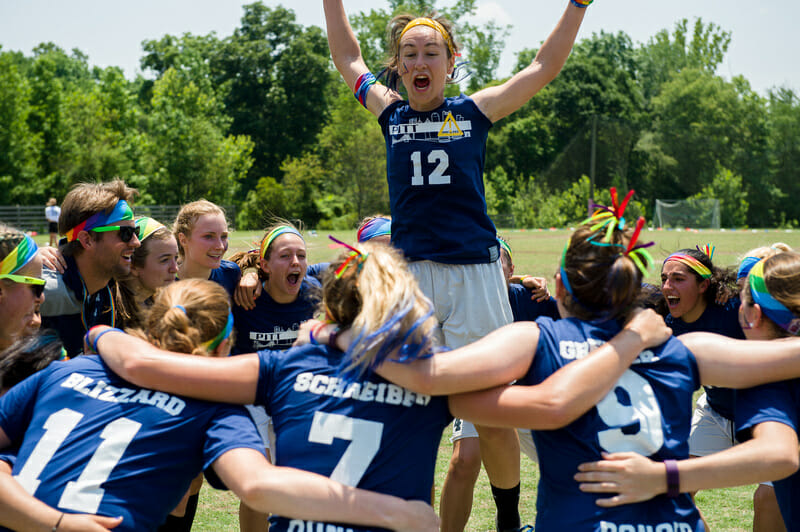Developing a team culture takes thoughtful work.
January 26, 2018 by Russell Wallack and Tiina Booth in Opinion with 0 comments

This article is part of the Coaches’ Corner series from UMass coaches Tiina Booth and Russell Wallack. See every article in the series here.
As this is my first article, I’m going to share a few notes to introduce myself, my thinking, and my writing.
- Don’t read me as an expert. I know our sport well, I have played for almost 20 years, and I have competed at the highest levels. So yes, my opinion is worth considering, but I do not think you should accept it blindly or implement it without a willingness to test it.
- Your team is unique. I will strive to write every post in this series in a way that respects that uniqueness and disrupts the tendency to work in terms of ideals (your team will never get there). On that note, I have mostly coached open teams, and most of the players on those teams have been male-identifying. I think I still have plenty to offer for coaches in other situations, and I will try to call out my assumptions when I catch them.
- All of these topics are deserving of much more discussion and consideration of nuance. Feel free to send us questions or comments if you want me to take a deeper dive on anything in our mailbag columns.
- Please comment if you have reflections on the content or style of my writing. I am learning about myself as a writer, teacher, and coach through this process.
What Is Culture?
As defined by Merriam Webster, culture is “the set of shared attitudes, values, goals, and practices that characterizes an institution or organization.”
Every team has a culture. If you do not think your team does, then it has what we’ll call “default culture.” Default culture is largely the product of unconscious biases and thought patterns that exist in the broader culture that your team inhabits. For example, in the case of the University of Massachusetts Men’s team that Tiina and I coach, unless we all consider another direction, we are likely to have a culture dominated by the “attitudes, values, goals, and practices” of the college-aged men on our team. It is our job to productively disrupt this default culture, so that there is room for development and improvement.
A note here on safety, when we talk about the fluidity of what a team’s culture can be, we also have to keep in mind a baseline of physical and emotional safety. For example, if your players are experiencing verbal abuse or derogatory language at practices, how can they trust that you have their well-being in mind? If they are being physically abused through hazing, how can they trust their teammates? You cannot reasonably expect your players to “get comfortable being uncomfortable” (more on that in later columns), if they do not believe they are safe. “Safety first” is a moral — and in most cases legal — responsibility for team leadership.
Above that baseline, it is up to you and your players to define what culture will set your team up for success.
Coaches’ Corner: First Steps In Building A Team Culture is only available to Ultiworld Subscribers
Already have a subscription? Log in
Whether you visit Ultiworld for our reporting, our podcasts, or our video coverage, you can help us continue to provide high quality content with a subscription. By becoming a subscriber, not only do you receive benefits like exclusive articles and full article RSS feeds, you also help fund all of Ultiworld's coverage in general. We appreciate your support!